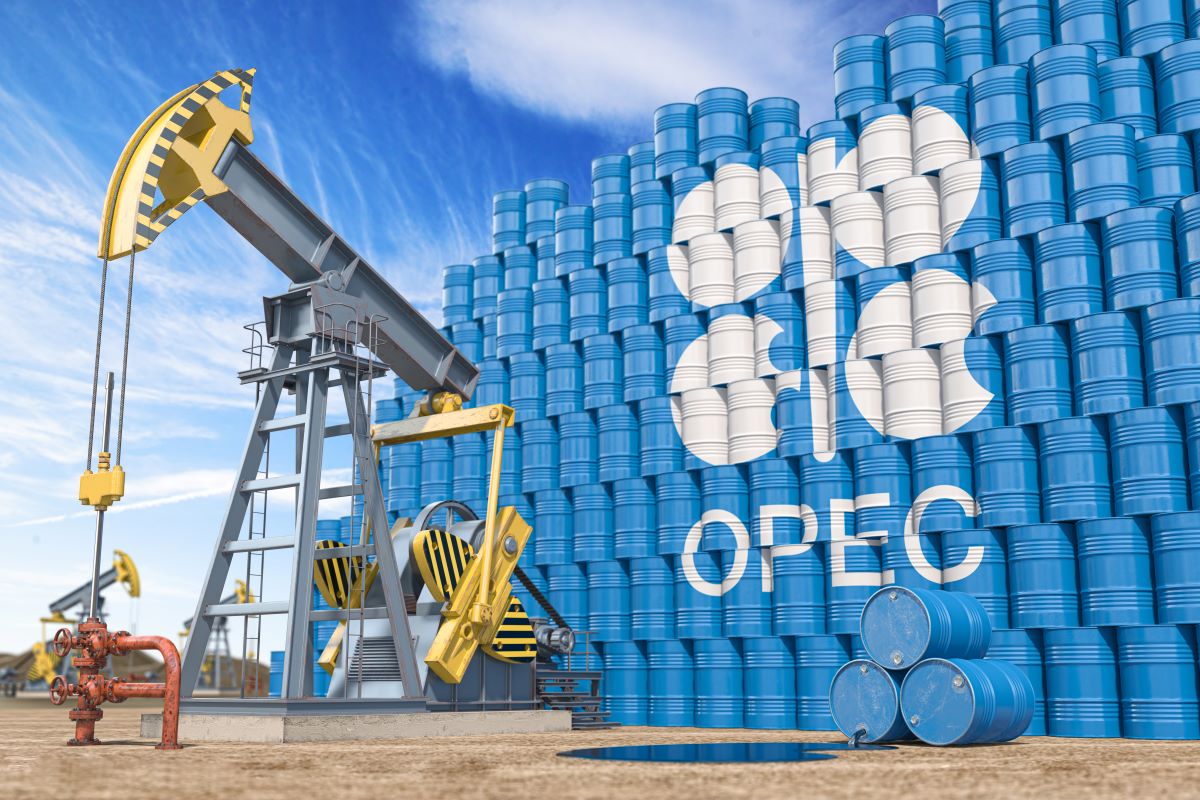In a strategic move to address ongoing market volatility, the Organization of the Petroleum Exporting Countries (OPEC) and its allies, collectively known as OPEC+, have announced an extension of their existing oil production cuts. This decision, made during the group’s recent ministerial meeting, aims to stabilize global oil prices and manage supply amid fluctuating demand.
Background of the Production Cuts

The OPEC+ alliance, which includes major oil-producing nations such as Saudi Arabia, Russia, Iraq, the United Arab Emirates (UAE), Kuwait, Kazakhstan, Algeria, and Oman, initially implemented production cuts in late 2022. These cuts were introduced to counteract declining oil prices and to balance the global oil market.
In April 2023, the group agreed to reduce oil output by over 1.65 million barrels per day (mb/d) starting in May 2023, with the cuts initially set to last until the end of 2023. However, facing continued market challenges, these reductions were subsequently extended through December 2024.
The global oil market has experienced significant fluctuations due to a combination of economic downturns, geopolitical tensions, and shifting energy policies worldwide. The OPEC+ alliance has continuously adjusted its strategies to ensure stability and prevent market oversupply, which could drive oil prices downward.
Recent Developments
In their latest meeting, OPEC+ members have decided to further prolong the existing production cuts until the end of December 2026. This extension reflects the group’s commitment to maintaining market stability in the face of persistent uncertainties, including fluctuating global demand and increased oil production from non-OPEC countries.
The decision also comes as the group postponed a planned increase in oil output to April 2025, allowing more time to assess market conditions and adjust strategies accordingly. With oil demand showing an uneven recovery due to inflation concerns, interest rate policies, and shifting energy trends, OPEC+ is taking a cautious approach to prevent price crashes.
Individual Country Commitments
The extended cuts involve significant contributions from key OPEC+ members:
- Saudi Arabia: Continuing its substantial reduction of 1 million barrels per day (bpd).
- Russia: Committing to an additional reduction of 471,000 bpd.
- Iraq: Maintaining a cut of 220,000 bpd.
- United Arab Emirates (UAE): Sustaining a reduction of 163,000 bpd.
- Kuwait: Persisting with a cut of 135,000 bpd.
- Kazakhstan: Holding a reduction of 82,000 bpd.
- Algeria: Continuing a cut of 51,000 bpd.
- Oman: Maintaining a reduction of 42,000 bpd.
These commitments are expected to play a crucial role in controlling global oil supply and maintaining oil prices at levels favorable for OPEC+ member states.
Market Implications
The decision to extend production cuts is anticipated to have several implications for the global oil market:
Price Stabilization
By limiting supply, OPEC+ aims to prevent potential oversupply scenarios that could lead to further price declines. Oil prices have remained volatile due to global economic uncertainties, and OPEC+ is working to ensure that prices do not fall below a threshold that would negatively impact oil-dependent economies.
Market Share Considerations
While the cuts support prices, they may also allow non-OPEC producers to increase their market share, potentially challenging OPEC+’s influence over global oil markets. Countries such as the United States, Brazil, and Canada have ramped up production in recent years, which could offset some of OPEC+’s supply cuts.
Economic Impact on Member States
Member countries are balancing the need for revenue from oil exports with the necessity of maintaining price stability. The prolonged cuts could lead to short-term losses in oil revenues for some nations, but OPEC+ believes this strategy will ensure long-term stability and prevent a price collapse.
Challenges and Future Outlook
Despite the unified front, OPEC+ faces internal and external challenges:
Internal Dynamics
Some member countries have, at times, exceeded their production quotas, leading to discussions about compliance and the effectiveness of collective agreements. Ensuring that all countries adhere to the agreed cuts is crucial for the success of OPEC+’s strategy.
External Pressures
Increased oil production from countries outside the alliance, such as the United States, Brazil, and Canada, introduces additional supply to the market, potentially undermining OPEC+’s efforts to control prices. The U.S. shale industry, in particular, has demonstrated its ability to quickly ramp up production when prices rise, creating additional challenges for OPEC+.
Geopolitical Factors
Global political tensions, including conflicts in key oil-producing regions and evolving relationships between oil-exporting and oil-importing nations, also play a significant role in market stability. Any geopolitical disruptions could impact supply levels and further influence oil prices.
Looking Ahead
As the global energy landscape continues to evolve, OPEC+ remains vigilant, regularly assessing market conditions and adjusting its strategies to navigate the complexities of global oil supply and demand. The extension of production cuts through 2026 underscores the group’s commitment to maintaining stability in an unpredictable market environment.
Market analysts will closely monitor how these extended cuts impact oil prices in the coming months. Additionally, the effectiveness of OPEC+’s strategy will depend on global demand trends, economic policies, and the ability of non-OPEC producers to fill supply gaps.
OPEC+ has signaled that it will continue to evaluate market conditions and make necessary adjustments. With energy transitions gaining momentum worldwide, the long-term role of OPEC+ in the global oil market remains a crucial factor in determining future oil price trends and economic stability for oil-producing nations.
EAM Jaishankar Strengthens India-Kuwait Ties in High-Level Talks



